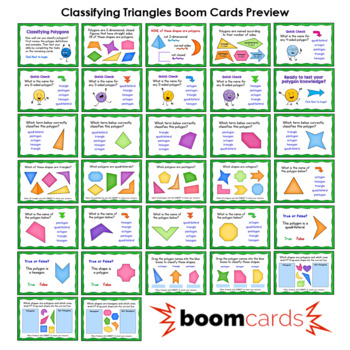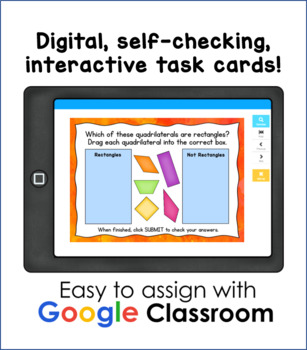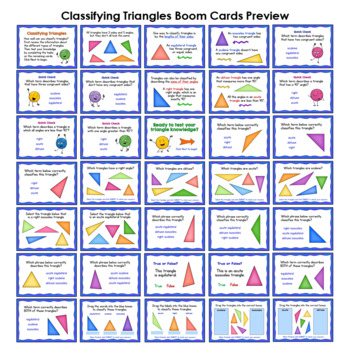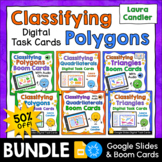Classifying Triangles, Quadrilaterals, and Polygons Boom Cards Bundle with Audio
- Zip
- Internet Activities
What educators are saying
Products in this Bundle (3)
Also included in
- The Classifying Polygons Boom Cards and Google Slides Bundle includes three decks of geometry digital task cards in two different formats. All six products include at least 30 interactive task cards designed to help students learn to identify and classify polygons, quadrilaterals, and triangles. CliPrice $9.00Original Price $18.00Save $9.00
Description
The Classifying Polygons Bundle includes three decks of digital self-checking task cards designed to help students practice classifying triangles, quadrilaterals, and polygons. Each product includes audio read-aloud options. Boom Cards are both interactive and fun, and they can be used in the classroom or assigned for remote learning at home.
What's Included in This Bundle (102 Boom Cards Total)
- Classifying Polygons Boom Cards
- Classifying Triangles Boom Cards
- Classifying Quadrilaterals Boom Cards
Each deck includes over 30 interactive digital task cards that use a variety of response styles including true/false, drag and drop tasks, fill in the blank questions, and clickable multiple choice questions. Visit the individual product pages to preview all of the Boom Cards in each deck.
If you're new to Boom Cards, watch my free Intro to Boom Cards video to see how easy it is to get started!
Important Information About Boom Cards
Boom Cards are not printable! Instead, they are interactive, self-checking task cards that are hosted on the Boom Learning℠ platform. You can assign them in Google Classroom or by providing your students with a FastPlay link.
After you purchase this bundle, download all three Boom Card product PDF files. When you click the access link on page 2 of each product file, the Boom Cards will be added to your Boom library. If you don't already have a Boom Learning account, you'll be prompted to create a free account at that time.
To use Boom Cards, you must be connected to the Internet. Boom Cards play on modern browsers (Chrome, Safari, Firefox, and Edge). Apps are available for Android, iPads, iPhones, and Kindle Fires. For security and privacy, adults must have a Boom Learning account to use and assign Boom Cards. You will be able to assign the Boom Cards you are buying with "Fast Pins," a type of play that provides instant feedback for self-grading Boom Cards. FastPlay is a free way for students to engage with Boom Cards decks. For additional assignment options and data tracking, you'll need a premium account. If you are new to Boom Learning, you will be offered a free trial of their premium account. Click here for the current details of this offer.






